TPE stands for the type of psychic energy. The distribution of TPEs in the psyche of the individual is called TPE-model. The model is used to identify personality type and subtype(s).
Associative Typology deepens our knowledge about the psychological characteristics of personality in order to further our understanding in the spheres of Socionics, practical psychology and psychotherapy. It does this by offering a more profound comprehension of the inner nature of the individuals through the psychodynamics of music and colour. This article refers to the fundamental categories (such as dichotomy, functions, groups of psychological types and types of psychic energy (“TPE”) which provide the basis for Associative Typology. As a practical application for associative theory in its current stage of development, the basic descriptions for four groups of psychological types are presented to the readers (typology according to the type of psychic energy) and corresponding descriptions for types of musical compositions (musical typology) on the basis of it being more efficient to resolve any issues of general psycho-diagnostics for the client and to find the best approach to rendering psychotherapeutic assistance.
Key words: psychology of the personality; psychotherapy, psycho-diagnostics, association, typology, Socionics, psychic energy, music, colour.
Introduction
Typology in Associative Socionics originates in the psychoanalytical conception of personality structure by S. Freud, analytical psychology by C. Jung and the typology of the informational metabolism of A. Augustinavichute. The article on the ‘Butterfly’ associative model by O. Tangemann forms the basis of Associative Typology, which contains theoretical grounds and references to the studies of psychoanalysts and other authors whose concepts are reflected in the theory of Associative Socionics. Tangemann correlates the types of psychic energy with the components of personality structure which were described for the first time by S. Freud in his studies (Ego, Id and Super-ego) 1. Similar terminology was used by the founder of Socionics, A. Augustinavichute, when marking up the model blocks of informational metabolism – Model ‘A’. The names of three blocks in Model ‘A’ correspond to the components in Freud’s personality structure. For the fourth block, Augustinavichute selected the name ‘Super-id’, which correlates in meaning with the Jungian concept of the collective unconscious. More detailed information about Model ‘A’ can be found in Augustinavichute’s book ‘Socion’ (2008) 2.
In creating the Associative model, O. Tangemann borrowed the block names that were used in Model ‘A’ for the four types of psychic energy, using them for the blocks of her ‘Butterfly’ model. Information on types of psychic energy (TPE) was taken from the theory of Socionics, partially corresponding in meaning to the Freudian components of personality structure. Three TPE (Ego, Id, and Superego) correspond by their meanings to the components of the personality structure by S. Freud. The fourth TPE is related by its meaning with the “Shadow” archetype by C. Jung 1. Four groups of psychic types that appear to be the carriers and exponents of the four TPE have been named correspondingly as Ego-types, Id-types, Superego-types and Superid-types. In the model picture, each of the wings of the butterfly is related to one of four blocks. Which block corresponds to which wing will be made clearer in this article.
1. The associative model “Butterfly”
In Socionics, the TPE groups are formed through the interchange of three basic dichotomies: extraversion-introversion, rationality-irrationality, and statics-dynamics.
S – sensing, L- logical (thinking), I – intuitive, E – ethical (feeling), I- introvert, E-extravert.
Id-types – are the irrational, static extraverts such as Aldous Huxley (IEE/ENFP), Don Quixote (ILE/ENTP), Napoleon I (SEE/ESFP) and Georgy Zhukov (SLE/ESTP).
Superid-types – are the irrational, dynamic introverts such as Sergei Yesenin (IEI/INFP), Honoré de Balzac (ILI/INTP), Alexandre Dumas (SEI/ISFP) and Jean Gabin (SLI/ISTP).
Ego–types– are the rational dynamic extroverts such as Hamlet (EIE/ENFJ), Victor Hugo (ESE/ESFJ), Jack London (LIE/ENTJ) and Stierlitz (LSE/ESTJ).
Superego-types – are the rational, static introverts such as Fyodor Dostoyevsky (EII/INFJ), Theodore Dreiser (ESI/ISFJ), Maximilien Robespierre (LII/INTJ), Maxim Gorky (LSI/ISTJ).
On the functional level, these four TPE-groups of types correlate to the four pairs of functions which bear the same characteristics because they are situated in the interchange of the same dichotomies (extraversion-introversion, rationality-irrationality, and statics-dynamics). Pairs of functions are correlated with the groups of types in the following way:
For Superego-types – these are the functions of introverted logic and ethics.
Ti – the logic of relativity between phenomena, referring to rules and principles, order and structure, adherence to legality, legal judgement, categorical thinking, scientific theories, reasoning.
Fi – ethics of relationships, feelings towards others, ethics, an attention to social norms, identifying friends and enemies, morality, moral judgement, attention to the needs of others, empathising with people, taking umbrage.
For Superid-types – these are the functions of introverted intuition and sensation.
Ni– intuition of vague premonition, foresight and hindsight, doubt and vivid imagination; indecisiveness (“To be or not to be – that is the question”); self-absorption, mental wanderings, detachment from reality; attention is directed to the changes and progression of events over time, memories of the past and future, illusions.
Si – relaxation and bodily sensations (comfort, smell, taste, sight, colour), assessing one’s level of comfort and those of others, maintaining a cosy environment; paying acute attention to sensory changes and the needs of the body; an attention to attractiveness and aesthetic appearance; the perception of surfaces through touch; interest in health issues and cooking; the ability to put others at ease, focusing on sensual sexuality and pleasant appearance.
For Id-types – these are the functions of extraverted intuition and sensation.
Ne – intuition of insight and discovery; ability to grasp the essence of phenomena (to trim the sails to the wind); inspiration of ideas, open mind and originality of thought, (ambition to be a genius or at least to make a discovery), pursuit of novelty, multiple interests, hobbies, interests, sharing of thoughts and perspectives; ability to see the alternatives, the hidden potential of things.
Se – volitional sensation, sensation of will power, space and territory; the strength of personality, sense of achievement and reality; wishes and desires, freedom of action, impulse to liberation, expansion in space, a sense of ownership, material possessions, valuables, seizing control of the environment, assessing and dealing with threats, success, physical impact, assertiveness, the ability to dominate, focusing on lustful sexuality and powerful appearance.
For Ego-types – these are the functions of extraverted logics and ethics.
Te – the logics of absoluteness and evidence of the phenomena; practical or business logic, pragmatism and common sense, feasibility and effectiveness of actions, goal-setting and instructions, methods and experiments, productivity, technology, organisation, persuasion with factual information, scientific practices, system approach, mechanical work and machinery, reliance on facts, statistics and working experience rather than theory.
Fe – ethics of emotions, recognising and utilising expression of emotions (joy, sadness, anger, anxiety, agitation, excitement, panic etc.), power of emotions, emotional pressure, recognising emotional reactions, persuasion through emotional expression , inspiring passion in others and manipulation of their emotions (especially in groups), artistry and drama, impression.
This way, along with the 16 types of informational metabolism, there appears to be a general division into four groups of TPE. Each group of TPE includes 4 psychological types (see above). This division existed in the theory of Socionics before the Associative theory and method of typing appeared; so what is so special about this new approach to the definition of the personality type?
In the theory of Associative Socionics, types of psychic energy (TPE) are correlated with the pairs of Socionics functions, the classic temperaments of Hippocrates, the colour of chakras or the rainbow and certain characteristics of musical compositions. Correlating the peculiarities of the psyche with the colour and music aims to expose the deep essence of interconnections between human beings and nature’s phenomena, universal creation and total harmony. Such attempts have been made earlier by other theorists and practitioners. The M. Lüscher colour test had gained worldwide popularity 3. Russian specialists in musical psychology may know the studies of V. Petrushin 4. In Socionics, there were also attempts to correlate the colours with the Socionicfunctions, in particular, one of the articles by V. Gulenko 5.
According to O. Tangemann, developments in the sphere of Associative Socionics allow us to re-think and re-acknowledge deep connections between the person’s psyche , music and colour. By emphasising the four TPEs and empirical studies on the musical preferences of people with these different personality types, it became possible to create an Associative typology that correlates characteristics of personality types with colour and musical preferences. Moreover, Associative theory allowed looking into the individual’s psychodynamics that were previously hidden from view.
The Associative method of typing makes it obvious that the distribution of psychic energy in the structure of the psyche determines the character of its psychodynamics (i.e. its pattern, harmony and imbalance), which is called the ‘TPE profile’ or ‘TPE dynamics’. The concept of TPE in Socionics opens up possibilities for applying the Associative method of typing to practical psychology, psychotherapy and alternative therapy.
By studying Associative typology, one can determine one’s leading and complementary TPEs as independent to oneself 6. Please note that when using the descriptions given in this article, the reader should not be able to determine his/her personality type (one of the 16 types of the Socionics typology). Instead, by determining one’s strongest TPE, the issue of determining one’s personality type should become much easier. After all, it is easier to determine a type among 4 rather than among 16 types.
As far as there are only 4 groups of TPE, by acknowledging its descriptions from this article, it should not be difficult to determine at very least the strongest and the weakest TPEs. An obvious lack of one of the TPEs in the psyche of the individual is reflected in the person’s dependence on the environment, unsatisfied needs and reliance from external aid in order to restore emotional and psychological balance. Today, Associative approach is inseparable from Socionics. There is a connection in theory and practice between the Associative “Butterfly” model and Model A. This means that definition of the type of psychic energy (TPE) facilitates the definition of the personality type and vice versa. To find out about how the types of psychic energy are correlated with the temperaments, energy system of chakras and forms of consciousness, see the article by O. Tangemann, “The Associative Model Butterfly” (2008) 1.
Research in the sphere of Associative Socionics is still in development. This article does not aim to cover the whole scope of works or to demonstrate the depth of comparative analysis for musical and colour preferences of people with different personality types. Nevertheless, the author has found it possible to present some of the developments in the sphere of Associative Socionics – a description of Associative and musical typology: the psychological peculiarities of four TPE – description of musical qualities typical for these groups.
Associative Typology – typology according to the types of psychic energy (TPE)
Id-types are the people who occupy themselves with whatever is interesting and pleasurable to them. Their desires are variable, changeable, and adaptable to the current circumstances. As a rule, they have a wide range of interests, plenty of acquaintances and there are many places which they have visited already or are planning to visit. Their main merit is that they can relatively quickly and without much effort get adapted to the new situation and switch from one activity to another if that is necessary. They are oriented to the external world and the things happening around them. As far as the world is full of various pleasures and wonderful events, their interest in life and willingness to enjoy new experiences remains much stronger than melancholy and short failures. Their tears dry out quickly and there is a radiant smile on their faces again, with eyes wide open, expressing the surprise and genuine interest in everything new and uncovered. Id-types are childishly open, optimistic and cheerful, they love life and they know how to enjoy it better than any other type of people. They tend to put their own interests first, leaving interests and desires of others second. This is a reason why they might have some conflicts with others from time to time.
Id-types carry within them a creative drive, generously sharing their interests and cheerfulness with others and being a source of inspiration for those who do not possess the power of optimism and zest for life.
Id-types are the bright exponents of the psychic energy ‘Id’ which, according to the Associative theory, correlates with yellow and green colours. Each mentioned colour endows the carrier of this type of energy with special characteristics.
Yellow colour – symbolises changeability, flexibility and emancipation of the human nature. Yellow characterises a person as self-sufficient, freedom-loving and cheerful. This colour is associated with laid-back behaviour, ease of communication and the free flow of its influence on external activities, like the sun spreading its light all over and sharing its warmth with all living creatures.
Green colour – is the symbol of eternity, inexhaustible vivacity, and one’s potential whether apparent or hidden. This colour freshens up, calms, and inspires hope for future and the strengths to overcome obstacles. Those who choose the green colour are characterized by self-control and persistence in achieving their goals. Such people meet the challenge of failure, and can find the way out from any difficult situation, staying resilient even in the face of the danger.
Representatives: Elvis Presley,Britney Spears, Jonathan Ross, Rihanna, Pink, Susan Boyle, Rushdi Salman, Lui de Fuines etc.
Superego-types are the opposite of the life-loving and enthusiastic Id-types. Rather than thinking about themselves and their own desires, these people worry about how to satisfy the requirements and needs of others, how to improve their way of life and first of all, the lives of their loved ones. Superego-types are law-abiding, honest and responsible. They tend to fulfil the assigned work as high as diligently as possible so that they do not feel shameful in front of the others. When tackling an assignment, they go the extra mile to make sure their result is perfect. The quality of their work is their source of personal pride and critical self-esteem.
As a rule, they are quiet, reserved, hard-working people who know how to behave in any situation. There is obvious integrity in their views and consequence in their judgements and deeds. Superego-types are resistant to life’s hardships. They have a will power that allows them to overcome obstacles and they are oriented to authority, total respect and recognition rather than random chance or momentary pleasure. Superego-types assert high moral values, keeping up an established order that is important for social conservation. Superego-types are the bright representatives of the psychic energy ‘Superego’, which according to the associative theory can be correlated with all light colours in general and white, pink and violet colours in particular. Each mentioned colour endows the carrier of this type of energy with special characteristics.
White colour – symbolises the colour of verity, impeccability and excellence, attempting to make all that is implicit eventually explicit. This colour is associated with clarity, sincerity, purity of thought, wisdom and high morality.
Pink colour – is the colour of sympathy, tenderness and romantic love. Pink colour relaxes and calms, taking you to the world of sublime love, fairy tale and sweet dreams.
Violet colour – is the colour of spiritual contemplation, characterising a person as a philosopher and taking your thoughts to the highest levels of existential knowledge, opening up the mysteries of the universe. This colour is chosen by those who value intellectual and spiritual pursuits, who think about the ageless subjects of good and evil, justice, honesty, and the meaning of human life.
Representatives: Agnetha Faltskog, Clint Eastwood, Jerry Springer, Gwyneth Paltrow, Jodie Foster, Lionel Richi, Gotye etc.
Ego-types are true born leaders. They are hard-working, possess great will power and intend to change the order of the surrounding environment at their sole discretion. As a rule, they are somewhat presumptuous and would not like to admit their weakness in public. It is important for them to have a goal and to feel that they are ready to deal with any obstacles in order to achieve that goal. Ego-types are real fighters, tending not to adjust to any existing frames but still controlling the circumstances and intentions of other people and delegating the situation to the right people in order to achieve the goal with mutual efforts. Ego-types would successfully manage other people, make decisions, take responsibility and not give up on failures. Such people, as a rule, are good at projecting an aura of confidence and giving the impression of a serious, business person.
Ego-types are open minded in their judgement, assertive in their work and oriented to the final result. The weak point of such people is their obsession with emotions or goals and tasks which they have initially set for themselves. They feel the need to finish the task that they have undertaken and bring it to a finish even when the situation had changed and there is no point in pursuing the goal further. These people take responsibility more than any other types of people. In the case of a goal not being reached due to some objective reason which did not depend on them, they may take it as their personal failure. Ego-types do not like unexpected changes and they may find it difficult to promptly react to any changes in the environment, changes to plans and moreover to re-view long-term goals. Steady, predictable situations and order throughout their personal and social lives is more beneficial to them.
Ego-types are the bright exponents of the ‘Ego’ psychic energy which according to the associative theory, is correlated with red and orange colour. Each mentioned colour endows the carrier of this type of energy with special characteristics.
Red colour –is hot and energetic, traditionally being associated with masculinity, fire and blood. Energy of red colour brings physical strength, courage and confidence to the person. Undoubtedly, this is the colour of the winner! In order to win, a person needs an impulse to action, integrity of personality and a high level of attractiveness. Red colour is like a magnet, attracting the attention and not leaving you at ease, keeping you in permanent tension, exciting you and charming you.
Orange colour – like red colour, carries an energetic charge inside, exciting and warming you up, invigorating the senses. Unlike the red colour, the orange one is more flashy and cheerful, symbolising sexuality and orientation for success.
Representatives: Miley Cyrus, Maria Callas, Goya Toledo, Michael Stipe, Geoffrey Rush, Benazir Bhutto, Adele, Diana Ross, Chuckle Barry and etc.
Superid-types are strongly in contrast comparing to the Ego-types. Unlike Ego-types, they do not have a goal to impose their will to others. They do not tend to manage others and control the situation but at their best they are able to adjust themselves and bring subtle changes to the environment. Their influence on the circumstances and people around them is not obvious compared with the influence of Ego-types. Superid-types know how to create the relaxed atmosphere of nonintrusive communication, soft touch, humour and comfort. Superid-types find themselves often sinking into their inner world, which serves them as a source of inspiration and creation.
The inner world of such people is fragile and mobile. They subtly respond to the slightest changes in the surrounding environment. Knowing the sensibility of its nature, Superid-types spend a lot of time in loneliness, philosophising and thinking about themselves, their needs and trying to protect themselves from the destructive influence of the outside world. Unlike other types, this type of person can adapt to the adverse conditions of the surrounding environment, consuming the minimum of efforts to find a way out from the difficult situation with minimal losses. They possess the ability to keep their heads down in bad times and successfully live through the storm. Searching for the way out of a critical situation, they rely on their subjective perception which serves as a compass. Superid-types possess a sophisticated imagination, allowing them to imagine not only what really has happened but also what is going to happen and what is never going to happen. These people show a special interest towards animals and like to observe changes in nature. They are very perceptive!
Superid-types are the bright exponents of the ‘Superid’ psychic energy, which is, according to Associative theory, correlated with dark colours with black and blue in particular. Each mentioned colour endows the carrier of this type of energy with special characteristics.
Black colour – symbolises the mystery of the night and the imaginative, inner world of a person. Those who choose black colour carry a love for everything mysterious, unknown, and unclear, appearing mysterious to others.
Blue colour– brings in the condition of physical relaxation and emotional calmness and is associated with the freshness and coolness of water during a hot summer afternoon. Blue is associated with the endless blue sky and a feeling of detachment and spaciousness. The blue colour tones up, cools and calms the fiery emotions.
Representatives: Bjork, Amy Winehouse, Liev Shreiber, Simon Cowell, Dido, Duffy, Mylene Farmer, Mika, Lana Del Rey, Helen Mirren, Marilyn Monroe, Paul McCartney and etc.
References:
1. Tangemann O.B. Associative model Butterfly – Socionics, Mentlogy and Personality Psychology”, 2010, ? 4, p. 65 – 70; ? 5, p. 77 – 82.
2. Augustivinchute A. Socion. M.: “Black Squirrel” – 2008
3. Dragoonsky V. Color personality test. AM AST, MHC. Harvest – 2005
4. Gulenko V.V, Expressive possibilities of mental states. The man and the world in universal language. – 1995 – http://socionics.kiev.ua/articles
5. Petrushin V.I. Psychological Models reflecting the reality in art-2008, N4, http://www.health-music-psy.ru/
6. Tangemann O.B. Test to determine the type of psychic energy. 2010 http://aeterna.ru/test.php?link=tests:103659
7. Film Actors http://www.rusactors.ru
8. Petrushin V.I. Music therapy – the connection with the major psychological schools and trends – 2010, N1, http://www.health-music-psy.ru/
Olga Tangemann 2010 © Associative Socionics
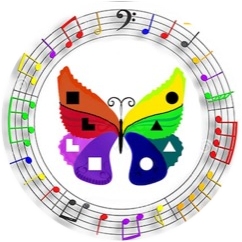



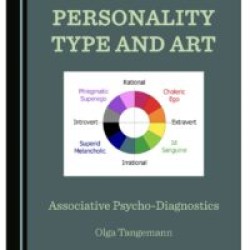
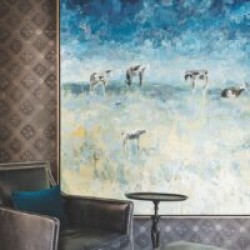

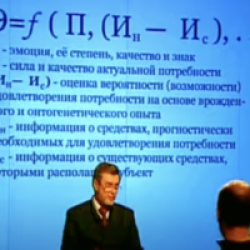
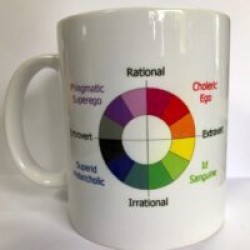
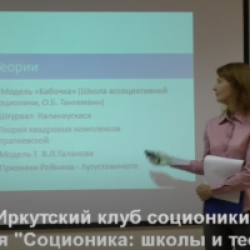
Alison Long:
Olga, you are asking for a lot of detail here. Please don’t be upset if you don’t get many responses. My expectation is that you will only get responses from those group members who already have a particular interest in art, so your results may be skewed. What are you studying this for?
Olga:
As with everything else people compare their preferences in groups like this – if they have anything in common. For those who would be interested to submit non-verbal material I will provide commentaries about profile and subtype. The people of the same type like ENTJ for example will differ on 3 basic preferences: J -P, E-I and statics- dynamics and hence will have different subtype within their own TPE group ( similar concept to temperament) and within the other TPE- groups. there is a simple logics to it. But it may be hard to grasp the idea straight away:
http://socionics4you.com/post-465?lang=en
It is possible to choose the profile? which shows the difference between the people of the same type based on descriptions and then to ask me to compare with your non-verbal preferences for example. But certain types can only have a certain 3 profiles and hence 3 subtypes out of 6. For ENTJ these are rational, dynamic or extraverted.
Subtypes show the differences between the people of the same type at the level of the strongest functions and at the level of the basic group preferences. For example, ENTJ -intuitive subtype will have ENFJ as a subtype within the Ego group and it could be either INTP or ENTP subtype. The TPE system widens our knowledge about abilities of people and what they can do best. It is also about compatibility between people and professional carrier and even .psychotherapy because you can apply the theory to psychodynamics.